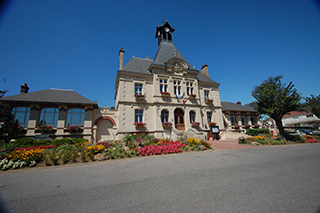Prochain point : lat="48.992824" lon="1.845405"

Town Hall-Cum-School
The village schools and town hall, pillars of the Third Republic, were joined together up to 1955
From the church, used for voting and debating...
Before the Revolution, the church was the venue for the municipal assembly headed by the priest, seigneur and syndic. During the 1790 elections, the council moved to the chapel of Notre-Dame-de-Liesse d’Aumont. After the chapel was sold off as a national asset, the rectory close to the church was used to hold meetings. When this was sold in 1797, the municipal building disappeared. As a result, the teachers (who held classes at home) reserved a ‘room used as a town hall above the school’ - as can be seen in the deed of sale for a ‘town hall-cum-school’ situated in the Vallée du Marais (at 32 rue de l'Hôtel de Ville). In 1835, a house was bought in Rue aux Bœufs (Rue de la Pose) and converted into a civic building adjoining a small school.
... to the town hall-cum-school
In 1900, in line with the principles of the time, the mayor was responsible for the school’s future. The architect was Théophile Bourgeois, who had designed numerous large houses and public buildings. The school was built on a spot known as Les Girouards, and the work was carried out thanks to Rose Bily, a resident of Juziers. Rose had made the town her sole beneficiary, and she contributed to half of the building costs for the town hall. An extension was added in 1931 at the expense of the accommodation for the teachers. The school was transferred to the Sergenterie (Sergeant’s Office) in 1955. Square Désiré Couteux, the site of the war memorial, connects Place de la Gare to Place de la Mairie. On the school’s centenary in 2000, the council upgraded and improved the building.





